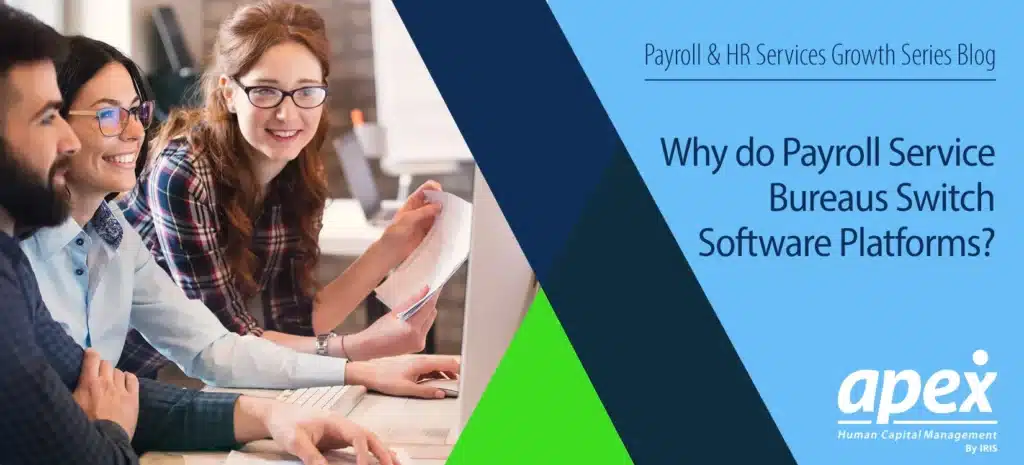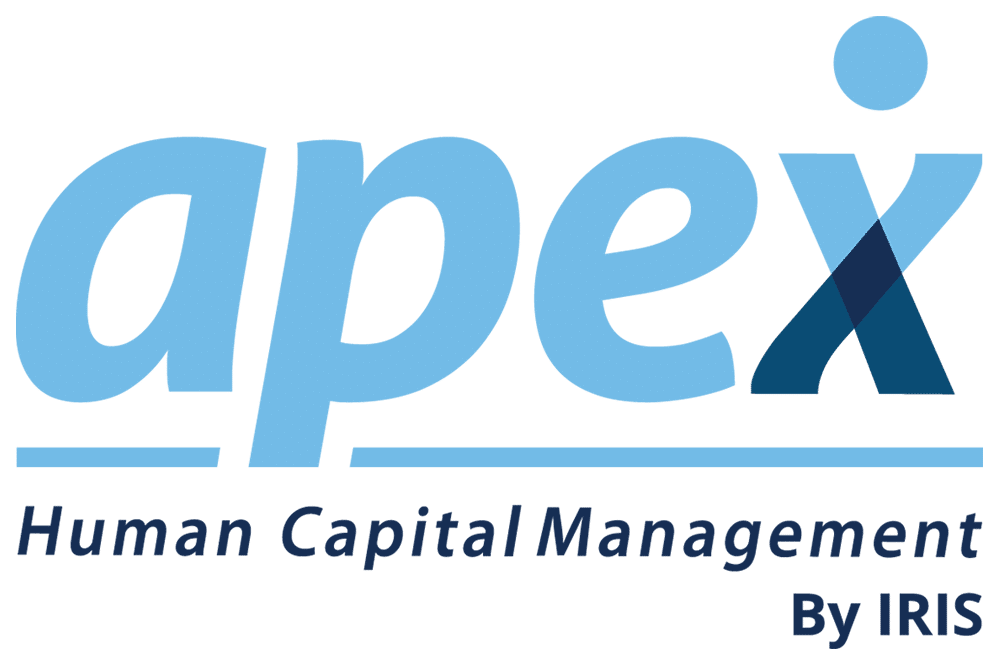
Today’s savviest payroll service bureaus do much more than add up hours, calculate pay and issue checks. Increasingly, they are taking on additional HR and accounting-related functions involving tax collection, payment and compliance; time and attendance; and a range of operations that follow employees through the lifetime of their workplace tenure, from applicant tracking to onboarding, through talent development and into retirement. The linchpin is the right payroll and HCM software platform. And the product that worked yesterday may be woefully inadequate for remaining competitive into the future. Here are several top reasons that payroll service bureaus jettisoned their prior platforms and converted to a different software platform.
Inadequate Features and Functionality
As businesses grow and evolve, their payroll needs change as well. A burgeoning employee roster may require more advanced reporting capabilities. Increased pressure timewise may force the need to automate certain processes that were previously done manually. And as millennials and Gen X continue to dominate the workforce, expectations of a modern, intuitive software interface are non-negotiable. When a payroll software platform can’t keep up with client and end-user employee demands, it’s time for a switch to a more comprehensive software solution.
That time came swiftly and unexpectedly for Lubbock, TX-based Applied Payroll Solutions in 2021 when its biggest local competitor suddenly closed and the firm woke up with more than 100 new clients.
“Most of those clients came from a payroll platform that was a lot more flexible than the one we were using at the time,” said Brittney Bennett, Applied Payroll Solutions’ COO. “They were accustomed to software that allowed them to log into a portal, input and manage employees and process their own payroll, only calling on their provider to facilitate tax filings and payments or when a tech issue came up.”
At the time, Applied Payroll Solutions handled clients’ payrolls from top to bottom, manually entering employee information and importing payroll data with spreadsheet software – and did it with a staff of just four, who soon found themselves overwhelmed.
“We knew we needed to make a switch,” Bennett said. An encounter at an industry conference led the firm to the Apex By IRIS HCM software platform.

We were immediately excited about what Apex had to offer,” said Applied Payroll Solutions’ CEO Martin Nowlin, noting an ultra-modern, icon-based interface; 24/7, cloud-based user access; and compatibility with the most popular related software were among the top selling points. “Today, our confidence level in the product and service we’re able to provide clients has skyrocketed and our ability to sell is unlimited. If someone had asked just nine months ago whether we could add another 100 clients in the next 10 months, I’d have said no. Now, we’ve got our eye on ultimately hitting 1,000 clients. That goal would not have been possible with the product we were using before.”
Lack of Compliance with Changing Regulations
A close second in the list of payroll software must-haves is the ability to comply with various state and federal regulations regarding payroll management, tax filings, employee benefits, etc. These regulations are subject to frequent changes and while they can be challenging to keep up with, the consequences of failing to do so are potentially devastating for both payroll service bureaus and their employer clients. A recent study by Global Scape, The True Cost of Compliance with Data Protection Regulations, reveals that out-of-compliance costs are 2.71 times higher than maintaining compliance. In dollars, that’s $14.8 million annually, on average, compared to $5.5 million cost of staying compliant.
Geoffrey Ludt, founder and CEO of Oklahoma City’s Ludt Payroll, knew he had to make a change when he realized that the leading accounting and payroll software he had been using for nearly a decade wasn’t keeping up with key legislative changes including the Affordable Care Act (ACA), which requires businesses employing 50 or more full time equivalent workers to provide health insurance or risk paying a penalty.
“There was no ACA function within that software, so we had to look outside the software, create a piecemeal solution and cross our fingers that it would work,” Ludt said. “An excellent experience starts with great software, but you have to be able to use that software to support your relationship. If the software requires you to erect all sorts of stilts and ladders to hold the relationship together, that’s not an excellent experience for either party.”
Ludt’s switch to Apex afforded him the ability to reach a new base of clients he hadn’t been able reach to before, including larger accounting firms, human resources consultants and benefits brokers.
“I can see us double our business, easily,” he says.


A mid-2021 tax algorithm update caused a host of system-wide inaccuracies in year-end processing for Brandie Jones’ Company Payroll Processing, LLC. Calculations based on pre-taxed items led to revenue and income reports being overstated; mismatched figures on pay stubs and Form W2s; and incorrect Medicare and Social Security deductions. That software provider’s solution: Address the federal-level issues but leave payroll service bureau clients on their own for state-level reporting. That’s when Jones made the switch to Apex.
“Shortly after I signed on, my client list doubled and my revenue grew exponentially,” she said, noting that the switch cleared the way for her to approach prospective clients with more complex compliance needs. “Because of complicated compliance issues with tips and income recording, I didn’t feel comfortable with approaching restaurant clients before. I do now. Where I didn’t have the capacity to grow just last year, I can now make my business as big as I want it to be.”
Even With These Issues, Why Do Some Businesses Stay with Software That Doesn’t Work for Them?
Even faced with the inadequacy of their software platform, some payroll service bureaus continue to trudge through out of the fear of a labor-intensive conversion.
Brian Bohle can attest. He founded InFocus Payroll in Evanston, ILL in 2012, growing it to 70 clients by 2019. That’s when the trouble began.
“As my company grew, I became less able to put up with some of the shortcomings of the software I was using,” Bohle said. “Clients were dependent upon me to do so much and the resulting time constraints kept me from being able to grow my business.”
After vetting multiple leading providers, Bohle chose Apex and set to work moving his client base onto the new platform one by one.
“At first, I was hesitant to allow Apex to assist with entering my client data, afraid their data entry quality wasn’t as good as mine,” he said.
But Bohle’s DIY approach quickly proved a daunting and potentially damaging move. Statistics show that each minute of downtime can cost the average company between $962 and $17,244. And when it comes to the payroll business, service bureaus can lose 10 to 20 percent of their client base in a time-inefficient or poorly implemented conversion process. Soon, Bohle opted to enlist Apex’s conversion specialists to help.
“When I finally let Apex take over conversion, it was a huge sense of relief,” he said. ” It sped things up by months and since has cut anywhere between 15 to 20 percent of my time directly servicing clients.” Much of that time savings is a result of clients now being able to log into the system and handle far more payroll functions on their own than InFocus’s previous software system would allow.
“My clients love being able to enter their payroll anytime they want rather than having to wait for me to release it to them,” he said. “Now, there’s no delay and far more transparency.”


Are you confident that your current payroll software will continue to effectively serve your clients and enable you to grow your business? Let Apex HCM conduct a personalized demonstration so you can see how we can help ensure your competitiveness and boost revenue.
Want to change your payroll software platform but still concerned about data migration and onboarding? Check out these resources for best practices for a quick and painless conversion.
